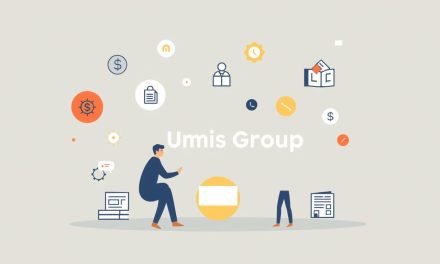Embarking on an independent career path can be both exhilarating and intimidating. As you navigate this journey, ensuring the long-term stability of your profession becomes paramount. A critical step in achieving this stability is conducting a thorough viability assessment.
This process allows you to evaluate the sustainability of your independent career before fully committing resources, enabling you to make evidence-based decisions about your career direction.
By understanding the core principles of this assessment, professionals can systematically evaluate multiple factors, including market demand and financial projections, to determine the viability of their career path.
Table of Contents
Key Takeaways
- Understand the importance of viability assessment for independent career stability.
- Learn how to evaluate the sustainability of your independent career path.
- Discover the core principles of viability assessment for evidence-based decision-making.
- Identify key factors to consider when assessing career viability.
- Recognize the ongoing role of viability assessment in your independent career journey.
Understanding Viability Assessment in Career Planning
For independent professionals, a thorough viability assessment is essential in determining the feasibility of their career path. This process involves a comprehensive evaluation of various factors to ensure that their professional endeavors are both sustainable and profitable.
Definition and Core Principles
Viability assessment in the context of career planning refers to the systematic evaluation of whether an independent professional’s path can generate sufficient value compared to its costs and risks. The core principles of this assessment include:
- Thorough market analysis to understand the demand and competition.
- Realistic financial projections to gauge potential income and expenses.
- Honest evaluation of one’s skills and capabilities to identify areas for improvement or additional training needs.
Evidence-based decision making is fundamental to any effective viability assessment. Professionals must gather relevant data rather than relying on assumptions, ensuring that their career decisions are informed and grounded in reality.
Why Viability Matters for Independent Professionals
For independent professionals, viability matters significantly more than for traditional employees because they bear all business risks and must account for variable income streams. The planning process must consider both short-term survival needs and long-term sustainability factors to provide a complete picture of career viability.
Understanding the difference between viability (can this work?) and desirability (do I want this?) helps professionals make more objective assessments of their career options. A properly conducted viability assessment serves as a reality check before making significant career transitions, potentially saving years of struggle in unsuitable professional paths.
The Purpose of Career Viability Assessment
Understanding the purpose of career viability assessment is crucial for independent professionals seeking stability. This assessment is a systematic process that helps determine whether a chosen career path can provide sustainable income and satisfaction over the long term.
The primary goal of a viability assessment is to evaluate the potential of a career path by considering various factors, including market demands, personal strengths, and financial implications. By doing so, professionals can make informed decisions about their career trajectories.
Identifying Sustainable Career Paths
One of the key outcomes of a viability assessment is the identification of sustainable career paths. This involves analyzing market trends, demand for specific skills, and the competitive landscape to determine which career paths are likely to remain viable in the future.
- Through systematic assessment, professionals can identify career paths that align with both market demands and their personal strengths.
- Viability assessments help in the decision-making process by providing objective criteria against which career options can be evaluated.
- The assessment process should evaluate both current viability and future sustainability, taking into account evolving market trends and personal career development.
Mitigating Financial and Professional Risks
Another critical aspect of career viability assessment is mitigating financial and professional risks. This includes identifying potential income fluctuations, business expenses, and other financial challenges that could impact career sustainability.
By conducting thorough viability assessments, professionals can account for potential risks such as market saturation, skill obsolescence, and regulatory changes. Evidence-based assessments enable professionals to differentiate between temporary market challenges and fundamental viability issues, thereby making more informed decisions about their career paths.
In conclusion, the purpose of career viability assessment is multifaceted, focusing on both the identification of sustainable career paths and the mitigation of financial and professional risks. By understanding and leveraging this process, independent professionals can secure their career stability and achieve long-term success.
Key Components of a Comprehensive Viability Assessment
To ensure long-term success, independent professionals must conduct a thorough viability assessment that encompasses several key components. This comprehensive approach enables them to make informed decisions about their career paths and identify potential areas for improvement.
Market Analysis and Demand Evaluation
A critical component of any viability assessment is market analysis, which involves researching current demand, competition, and pricing structures in the target market. By understanding these factors, independent professionals can determine whether their services are in demand and how they can differentiate themselves from competitors. Market analysis forms the foundation of a viability assessment, providing essential insights that inform other components of the evaluation.
For instance, an independent professional in the tech industry might analyze market trends to identify areas with high demand for their skills. This analysis could reveal opportunities to specialize in emerging technologies, thereby increasing their market viability.
Financial Projections and Sustainability
Financial projections are another crucial aspect of a viability assessment, as they help independent professionals understand the financial sustainability of their career. This involves accounting for both obvious costs, such as equipment and marketing expenses, and hidden expenses, like taxes, insurance, and retirement planning. A thorough financial projection enables independent professionals to anticipate potential financial challenges and develop strategies to mitigate them.
| Expense Category | Monthly Cost | Annual Cost |
|---|---|---|
| Equipment and Software | $500 | $6,000 |
| Marketing Expenses | $800 | $9,600 |
| Insurance and Taxes | $300 | $3,600 |
| Retirement Planning | $200 | $2,400 |
| Total | $1,800 | $21,600 |
Skills and Competency Alignment
The skills assessment component of a viability assessment evaluates whether an independent professional’s current competencies meet market needs and identifies gaps requiring further development. By aligning their skills with market demands, independent professionals can enhance their career sustainability and remain competitive. Continuous skill development is essential in today’s fast-paced work environment, where technological advancements and shifting market trends can quickly render skills obsolete.
For example, an independent professional in the marketing sector might need to develop skills in data analysis and digital marketing tools to remain competitive. By identifying these needs through a viability assessment, they can create a targeted professional development plan.
By integrating these key components – market analysis, financial projections, and skills assessment – independent professionals can conduct a comprehensive viability assessment that provides a holistic view of their career sustainability. This approach enables them to make informed decisions, mitigate potential risks, and develop strategies for long-term success.
The Viability Assessment Process for Independent Careers
The journey to a sustainable independent career begins with a comprehensive viability assessment. This process is crucial for professionals who are considering a transition to independent careers, as it helps in determining the feasibility and potential success of their career path.
Initial Evaluation Phase
During the initial evaluation phase, professionals gather preliminary data about market conditions, financial requirements, and skill demands. This step is essential to determine if further assessment is warranted. Effective viability assessments at this stage lay the groundwork for a successful independent career.
In-Depth Analysis Techniques
In-depth analysis techniques include competitive benchmarking, detailed financial modeling, and skills gap assessment. These methods provide a comprehensive view of career viability, enabling professionals to make informed decisions. By leveraging these techniques, independent professionals can identify potential risks and opportunities.
Documentation and Reporting Methods
Documentation methods should capture both quantitative data and qualitative insights, creating a reference point for future decision-making. The final output of the viability assessment process should include clear action items addressing identified gaps and leveraging recognized strengths.
The assessment process should be iterative rather than linear, allowing professionals to revisit assumptions as new information becomes available. Time management within the viability assessment process is crucial—balancing the need for thorough analysis against the risk of « analysis paralysis. » Effective assessments acknowledge that different career paths have different needs and success metrics, avoiding one-size-fits-all approaches.
By adopting a structured approach to viability assessment, independent professionals can ensure that their career decisions are well-informed and tailored to their specific needs and work requirements.
Financial Aspects of Career Viability
The financial viability assessment is a critical step in ensuring the long-term sustainability of independent careers. It involves a comprehensive evaluation of various financial factors that impact career stability.
Income Stability Assessment
Income stability assessment is a crucial component of financial viability, analyzing not just potential earnings but also the consistency and predictability of revenue streams. This assessment is vital for independent professionals as it directly impacts their ability to meet financial obligations and maintain a stable lifestyle.
Cost Structure Analysis
A thorough cost structure analysis is necessary to accurately assess financial viability. This involves accounting for both fixed costs, such as insurance and licenses, and variable expenses, like materials and subcontractors. By understanding the cost structure, independent professionals can better manage their finances and make informed decisions.
Pricing Strategy Evaluation
Pricing strategy evaluation determines an independent professional’s ability to charge rates that support financial sustainability while remaining competitive in their market. This evaluation is critical in ensuring that the professional can maintain a viable business model.
Key considerations in financial viability assessments include:
- Scenario planning for different financial outcomes to prepare for potential risks and opportunities.
- Integrating tax planning considerations, as tax obligations significantly impact net income.
- Understanding that cash flow timing is often more critical than total annual income in determining day-to-day viability.
- Accounting for both business sustainability and personal financial needs, including retirement planning and emergency reserves.
- Including provisions for business development and skill enhancement investments to maintain long-term competitiveness.
By carefully evaluating these financial aspects, independent professionals can ensure the viability of their careers and make informed decisions to achieve long-term stability.
Market Viability Considerations for French Professionals

Assessing market viability is essential for French professionals to make informed decisions about their independent careers. This assessment involves understanding the unique characteristics of the French business landscape and regulatory environment.
To effectively evaluate market viability, French professionals must consider current market trends and opportunities. The French market is currently witnessing significant growth in areas such as digital transformation, sustainable development, and specialized consulting services. These emerging trends present potential avenues for independent professionals to establish viable careers.
French Market Trends and Opportunities
Current French market trends indicate a shift towards digitalization and sustainability. Independent professionals can capitalize on these trends by offering services that cater to the growing demand for digital transformation and sustainable practices. Specialized consulting services are also in high demand, particularly in areas that require specific expertise.
- Digital transformation is driving demand for IT and technology consulting services.
- Sustainable development initiatives are creating opportunities for professionals with expertise in environmental sustainability.
- Specialized consulting services, such as HR and financial consulting, are in high demand.
Regulatory and Compliance Factors
Regulatory compliance is a significant factor in viability assessment for French independent professionals. The complex administrative requirements in France can impact operational costs and must be carefully considered. Understanding the regulatory environment, including statuses such as auto-entrepreneur and micro-entrepreneur, is crucial for making informed decisions.
| Regulatory Status | Description | Revenue Limitations |
|---|---|---|
| Auto-entrepreneur | Simplified status for independent professionals | €72,600 annual revenue limit |
| Micro-entrepreneur | Similar to auto-entrepreneur with some additional benefits | €176,000 annual revenue limit for services |
By understanding these market viability considerations, French professionals can better plan their independent careers, making informed decisions that account for both market trends and regulatory requirements.
Assessing Long-Term Career Sustainability
For independent professionals, evaluating long-term career sustainability is key to achieving stability and growth. This involves a comprehensive viability assessment that looks beyond immediate needs to future-proof your career.
Long-term career sustainability assessment extends beyond immediate viability to evaluate how your independent career can evolve and remain relevant over decades. It involves examining various factors that contribute to your career’s longevity and adaptability.
Growth Potential Indicators
Growth potential indicators are crucial for understanding your career’s long-term viability. These include:
- Market expansion opportunities
- Skill development pathways
- The ability to increase your value proposition over time
Evaluating evidence of sustainable demand through industry forecasts, technological trends, and demographic shifts is also vital. This helps in making informed decisions about your career trajectory.
| Indicator | Description | Importance |
|---|---|---|
| Market Expansion | Opportunities to enter new markets or sectors | High |
| Skill Development | Pathways for continuous learning and skill enhancement | High |
| Value Proposition | Ability to increase the value offered to clients over time | Medium |
Adaptability and Evolution Strategies
Adaptability assessment measures your capacity to pivot in response to market changes, incorporating both personal flexibility and business model resilience. As part of the viability assessment process, it’s essential to evaluate your ability to adapt.
Strategies for adaptability include diversification, network development, and brand building. These elements are critical for long-term sustainability and should be part of your planning.
Common Challenges in Viability Assessment
Conducting a viability assessment is a crucial step for independent professionals, but it’s not without its challenges. The process involves evaluating various factors to determine the sustainability of a career path, and several obstacles can arise during this evaluation.
Data Collection Difficulties
One of the primary challenges in viability assessment is gathering accurate and comprehensive data. Independent professionals often face difficulties in obtaining transparent market information, particularly regarding actual earnings and client acquisition costs. This lack of data can hinder the ability to make informed decisions about career viability.
- Limited access to market data
- Difficulty in estimating client acquisition costs
- Inaccurate projections due to insufficient data
Objectivity and Bias Concerns
Another significant challenge is maintaining objectivity during the assessment process. Professionals may conduct self-assessments, where emotional attachment to their career ideas can cloud their judgment about viability. Additionally, confirmation bias can lead professionals to seek evidence supporting their preferred career path while dismissing contradictory information.
For more insights on maintaining objectivity during career transitions, you can explore resources like this article on professional reconversion.
Overcoming Assessment Obstacles
To overcome these challenges, it’s essential to implement structured frameworks and seek external input. Professionals should be willing to revise their assumptions based on new evidence. By acknowledging the potential pitfalls in viability assessment and adopting strategies to mitigate them, professionals can make more informed decisions about their career paths.
Effective viability assessment requires a balanced approach that considers both the potential benefits and challenges. By understanding the common obstacles and implementing strategies to overcome them, independent professionals can better navigate the planning process and achieve their career goals.
Tools and Resources for Effective Viability Assessment
Effective viability assessment is supported by a range of tools and resources that help independent professionals make informed decisions about their career sustainability. These tools not only enhance the accuracy of the assessment but also provide a comprehensive view of the professional’s market position and potential for growth.
Digital Assessment Platforms
Digital assessment platforms offer structured templates and financial modeling tools that standardize the viability assessment process. These platforms reduce calculation errors and provide a clear financial overview, enabling professionals to make data-driven decisions. For instance, financial planning tools within these platforms help model different scenarios and test the sensitivity of viability to various factors like pricing, client volume, and expense levels.
Some of the key features of digital assessment platforms include:
- Automated financial projections
- Market analysis templates
- Customizable viability reports
Professional Services and Consultations
Professional services from career coaches, business advisors, and financial planners offer objective external perspectives on career viability. These experts counterbalance personal bias and provide insights based on industry best practices. For example, a career coach can help identify transferable skills, while a financial planner can offer strategies for managing expenses and optimizing pricing.
Professionals can benefit from:
- Objective career viability assessments
- Strategic business planning
- Financial management advice
For more insights on high-demand consulting services that can support your career viability, visit our blog post on top consulting.
Self-Assessment Frameworks
Self-assessment frameworks guide professionals through a systematic evaluation of their skills, interests, and market opportunities. These frameworks use proven methodologies to help professionals identify areas of strength and potential growth. By using self-assessment frameworks, professionals can align their career goals with market demands and personal interests.
A comparison of different self-assessment frameworks is provided in the table below:
| Framework | Key Features | Benefits |
|---|---|---|
| Skills-Based Framework | Identifies key skills and competencies | Enhances skill development and marketability |
| Interest-Based Framework | Aligns career goals with personal interests | Increases job satisfaction and motivation |
| Market-Based Framework | Analyzes market trends and opportunities | Supports strategic career planning and growth |
By leveraging these tools and resources, independent professionals can conduct a comprehensive viability assessment that addresses both quantitative and qualitative factors. This holistic approach ensures that professionals are well-equipped to make informed decisions about their career paths and achieve long-term sustainability.
Implementing Viability Assessment Results

Effective implementation of viability assessment findings is key to turning insights into tangible career outcomes. After conducting a thorough viability assessment, independent professionals must translate the analytical findings into concrete action plans with clear priorities and timelines.
Action Planning Based on Assessment Findings
Creating an effective action plan involves identifying critical gaps between current capabilities and viability requirements, then developing specific strategies to address them. Prioritization frameworks help professionals determine which viability factors require immediate attention versus those that can be addressed over time.
- Identify critical gaps in viability
- Develop strategies to address these gaps
- Prioritize actions based on urgency and impact
Implementation planning should account for resource constraints, focusing efforts on the highest-impact activities that strengthen career viability. Evidence-based decision making should continue during implementation, with regular data collection to verify whether actions are improving viability as expected.
| Implementation Stage | Key Activities | Expected Outcomes |
|---|---|---|
| Initial Phase | Gap analysis, prioritization | Clear action plan |
| Ongoing | Regular monitoring, data collection | Continuous viability improvement |
| Review | Reassessment, adaptation | Updated strategies |
Monitoring and Reassessment Strategies
Monitoring systems should track both leading indicators (activity metrics) and lagging indicators (outcome metrics) to provide a complete picture of viability improvement. Reassessment strategies establish regular intervals for reviewing overall career viability, typically annually or when significant market changes occur.
By implementing viability assessment results effectively, independent professionals can ensure that their career development is guided by a continuous process of assessment and improvement, ultimately leading to sustained success.
Case Studies: Successful Viability Assessments in Independent Careers
Real-world examples illustrate how thorough viability assessment can lead to sustainable success for independent careers. Several case studies demonstrate the effectiveness of this approach in making critical career decisions and achieving long-term stability.
Freelance Consultant Transformation
A freelance consultant transformed their business by conducting a thorough market viability assessment. This process enabled them to identify underserved niches and develop specialized service offerings with premium pricing potential. By making evidence-based decisions, the consultant targeted industries with proven demand, significantly improving financial outcomes.
Independent Entrepreneur Pivot
An independent entrepreneur successfully pivoted their business strategy after ongoing viability assessment revealed declining market conditions. This early warning enabled a strategic shift before a financial crisis occurred. A comprehensive skills assessment helped identify transferable capabilities that could be applied to adjacent markets with stronger viability indicators.
Solo Professional Expansion
A solo professional achieved sustainable growth through systematic planning based on viability assessment findings. Careful financial viability assessment allowed the professional to account for increased operational complexity and maintain profitability throughout the expansion process.
| Case Study | Viability Assessment Outcome | Result |
|---|---|---|
| Freelance Consultant | Identified underserved niches | Premium pricing and improved financial outcomes |
| Independent Entrepreneur | Revealed declining market conditions | Strategic pivot to adjacent markets |
| Solo Professional | Systematic planning for expansion | Sustainable growth and maintained profitability |
These case studies highlight the importance of balancing quantitative metrics with qualitative factors in assessing overall career viability. The ability to implement viability assessment findings through concrete action plans distinguished successful professionals from those who conducted assessments but failed to act on results.
Conclusion: Securing Your Independent Career Through Thorough Viability Assessment
Ultimately, the viability assessment process empowers independent professionals with the insights needed for a sustainable career. By adopting a systematic approach to evaluating critical factors such as market demand, financial sustainability, and personal capabilities, professionals can make evidence-based decisions. This thorough assessment provides a foundation for long-term viability and reduces career risks.
Regular reassessments ensure that your independent career remains viable as market conditions and personal circumstances evolve. By implementing findings through concrete action plans, you can transform insights into tangible career improvements. The investment in comprehensive viability assessment pays dividends through increased career stability and reduced professional risk, securing your professional path.
FAQ
What is the primary purpose of a viability assessment for independent professionals?
The primary purpose is to determine whether a career path is sustainable and feasible, helping professionals make informed decisions about their future.
How does a viability assessment help in planning a stable career?
It helps by analyzing market demand, financial projections, and skills alignment, providing a comprehensive view of the career’s potential.
What are the key components of a comprehensive viability assessment?
Key components include market analysis, financial projections, and skills competency alignment, which together provide a thorough understanding of a career’s viability.
How often should independent professionals conduct a viability assessment?
It is recommended to conduct a viability assessment at the initial stages of a career and periodically thereafter, especially when significant changes occur in the market or profession.
What are some common challenges faced during a viability assessment?
Common challenges include difficulties in data collection, maintaining objectivity, and overcoming biases, which can be addressed through careful planning and the use of professional tools.
How can independent professionals implement the results of a viability assessment?
By creating an action plan based on the findings, monitoring progress, and reassessing as necessary, professionals can effectively utilize the assessment results to secure their career.
What tools are available for conducting a viability assessment?
Various tools are available, including digital assessment platforms, professional services, and self-assessment frameworks, which can aid in conducting a thorough viability assessment.
How does a viability assessment help in mitigating financial and professional risks?
By identifying potential risks and opportunities, a viability assessment enables professionals to make informed decisions, thereby mitigating risks and ensuring a more stable career.





